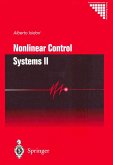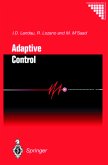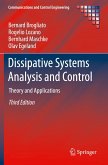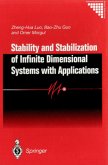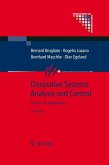Now in its third edition, this standard reference is a comprehensive treatment of nonsmooth mechanical systems refocused to give more prominence to issues connected with control and modelling. It covers Lagrangian and Newton-Euler systems, detailing mathematical tools such as convex analysis and complementarity theory. The ways in which nonsmooth mechanics influence and are influenced by well-posedness analysis, numerical analysis and simulation, modelling and control are explained. Contact/impact laws, stability theory and trajectory-tracking control are given detailed exposition connected by a mathematical framework formed from complementarity systems and measure-differential inclusions. Links are established with electrical circuits with set-valued nonsmooth elements as well as with other nonsmooth dynamical systems like impulsive and piecewise linear systems.
Nonsmooth Mechanics (third edition) retains the topical structure familiar from its predecessors but has been substantially rewritten, edited and updated to account for the significant body of results that have emerged in the twenty-first century-including developments in:
the existence and uniqueness of solutions;
impact models;
extension of the Lagrange-Dirichlet theorem and trajectory tracking; and
well-posedness of contact complementarity problems with and without friction.
Many figures (both new and redrawn to improve the clarity of the presentation) and examples are used to illustrate the theoretical developments. Material introducing the mathematics of nonsmooth mechanics has been improved to reflect the broad range of applications interest that has developed since publication of the second edition. The detail of some mathematical essentials is provided in four appendices.
With its improved bibliography of over 1,300 references and wide-ranging coverage, Nonsmooth Mechanics (third edition) is sure to be an invaluable resource for researchers and postgraduates studying the control of mechanical systems, robotics, granular matter and relevant fields of applied mathematics.
"The book's two best features, in my view are its detailed survey of the literature... and its detailed presentation of many examples illustrating both the techniques and their limitations... For readers interested in the field, this book will serve as an excellent introductory survey."
Andrew Lewis in Automatica
"It is written with clarity, contains the latest research results in the area of impact problems for rigid bodies and is recommended for both applied mathematicians and engineers."
Panagiotis D. Panagiotopoulos in Mathematical Reviews
"The presentation is excellent in combining rigorous mathematics with a great number of examples... allowing the reader to understand the basic concepts."
Hans Troger in Mathematical Abstracts
<
Nonsmooth Mechanics (third edition) retains the topical structure familiar from its predecessors but has been substantially rewritten, edited and updated to account for the significant body of results that have emerged in the twenty-first century-including developments in:
the existence and uniqueness of solutions;
impact models;
extension of the Lagrange-Dirichlet theorem and trajectory tracking; and
well-posedness of contact complementarity problems with and without friction.
Many figures (both new and redrawn to improve the clarity of the presentation) and examples are used to illustrate the theoretical developments. Material introducing the mathematics of nonsmooth mechanics has been improved to reflect the broad range of applications interest that has developed since publication of the second edition. The detail of some mathematical essentials is provided in four appendices.
With its improved bibliography of over 1,300 references and wide-ranging coverage, Nonsmooth Mechanics (third edition) is sure to be an invaluable resource for researchers and postgraduates studying the control of mechanical systems, robotics, granular matter and relevant fields of applied mathematics.
"The book's two best features, in my view are its detailed survey of the literature... and its detailed presentation of many examples illustrating both the techniques and their limitations... For readers interested in the field, this book will serve as an excellent introductory survey."
Andrew Lewis in Automatica
"It is written with clarity, contains the latest research results in the area of impact problems for rigid bodies and is recommended for both applied mathematicians and engineers."
Panagiotis D. Panagiotopoulos in Mathematical Reviews
"The presentation is excellent in combining rigorous mathematics with a great number of examples... allowing the reader to understand the basic concepts."
Hans Troger in Mathematical Abstracts
<
From reviews for the first edition: It is written with clarity, contains the latest research results in the area of impact problems for rigid bodies and is recommended for both applied mathematicians and engineers. Mathematical Reviews 1998f (Reviewer: P.D. Panagiotopoulos) The presentation is excellent in combining rigorous mathematics with a great number of examples ranging from simple mechanical systems to robotic systems allowing the reader to understand the basic concepts. Mathematical Abstracts (Reviewer: H. Troger)




